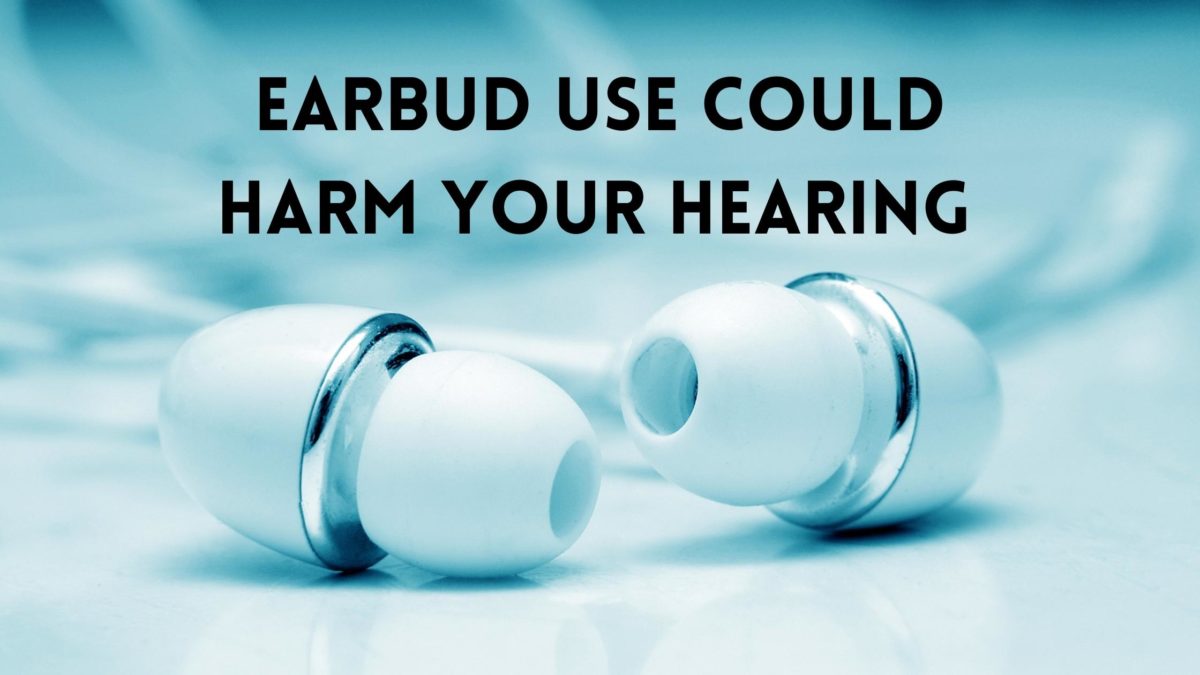- Tips for Using Hearing Aids in Different Environments - May 27, 2025
- Rechargeable Hearing Aids vs. Battery-operated Hearing Aids - May 16, 2025
- How to Effectively Communicate with Someone with Hearing Loss - May 7, 2025
Earbuds can be found almost anywhere. Everyone owns at least one pair, ranging from the inexpensive drugstore to the state-of-the-art noise-canceling types. We wear them to work, on walks with the dog, and at the gym. We also use them to converse on the phone to do other things hands-free. Let’s face it – they’re compact, convenient, and a fantastic way to multitask. But what you may not realize is that routinely wearing earbuds can cause significant damage to your hearing.
Earbuds and noise
When it comes to earbud use, there are two key considerations: volume and length of exposure.
The importance of volume cannot be overstated. Turning the volume on your earphones can harm your ears because they are close to your eardrum. It’s tempting to turn up the music on the bus to drown out the chatter in the seat next to you and to keep turning it up until we reach maximum loudness. When the talk behind you is finished, do you turn it down again? Most likely not. Turning up the volume is risky because we frequently expose ourselves to dangerously high noise levels for far too long.
Another factor to consider is the duration. How many hours a day do you spend listening to music, listening to a podcast, or watching a movie with earbuds in your ears? We associate dangerous sounds with loud noises, such as gunshots or emergency sirens. While a close-range gunshot is loud enough to damage your hearing, listening to music at moderate volumes for an entire day can be just as harmful. You’re more likely to acquire hearing loss early if your ears are constantly exposed to noise, whether it’s from traffic, the office, or your headphones on the way home. Your ears require a respite from all that noise to avoid hearing loss.
How loud is too loud?
In general, a noise level of 70 dBA, which is around the loudness of a washing machine or dishwasher, is considered safe for any length of time. However, when music is played at that volume, it might lose clarity, and the louder and quieter parts of a song can sound the same. As a result, people tend to increase the volume.
Occupational sound exposure should be limited to 85 to 90 decibels over eight hours, according to organizations such as NIOSH and OSHA. However, those suggestions are limited to the workplace and do not address the intricacies of everyday noise exposure. Limiting sound levels to 85 dBA does not guarantee the listener’s safety. Damage to your hearing, like skin damage, is most typically caused by extended and continuous exposure to noise over 70 dBA. The amount of safe listening time you have left is lowered if you are exposed to environmental noise greater than 70 dBA during the day, such as traffic noise, construction near your home, airplane engines, or loud sounds at work or school.
This way, you can see how even a recommended limit of 85 dBA can become problematic with time, and that’s even before we consider earbuds.
Practice responsible earbud use
You must be conscious of the volume at which you are listening to protect your ears. It’s best not to play music louder than 60 or 70 decibels, which is just a little louder than regular conversation volume. To avoid turning up the volume too much, place a volume cap on your smartphone that won’t let you turn it up more than 60% of the way. This way, you can listen for longer without harming your ears.
It’s also vital to take a break when you’ve been listening for a while. Your ears require rest and recovery time; therefore, incorporating this into your listening habits will protect them. The 60/60 rule is an excellent starting point. Only listen at a volume of roughly 60% and for no more than 60 minutes per session. Hearing loss can be avoided by taking a short break every hour and listening to low volumes.
Pay a little more for quality
It’s tempting to use the cheapest earbuds you can find because earbuds are compact and easy to lose. The truth is that cheap earbuds distorted sound, so you’ll have to crank up the volume even higher to hear clearly. Not only that, but they’re more likely to break, so even if you haven’t lost them in a few weeks, you’ll almost certainly need to replace them.
Consider purchasing a pair of earphones that give good sound quality and do not cause hearing impairment. Find noise-canceling earphones to hear what you want to hear without turning up the volume. Headphones are another smart alternative because they often better block out other sounds and sit a little further away from the eardrum, reducing the chance of ear damage. However, like with earphones, you should still observe the 60/60 rule to avoid hurting your hearing. Invest in noise-canceling headphones instead, which are better for your hearing.
If you’re concerned about your present hearing ability, come in for a hearing test and consultation with our team today!

